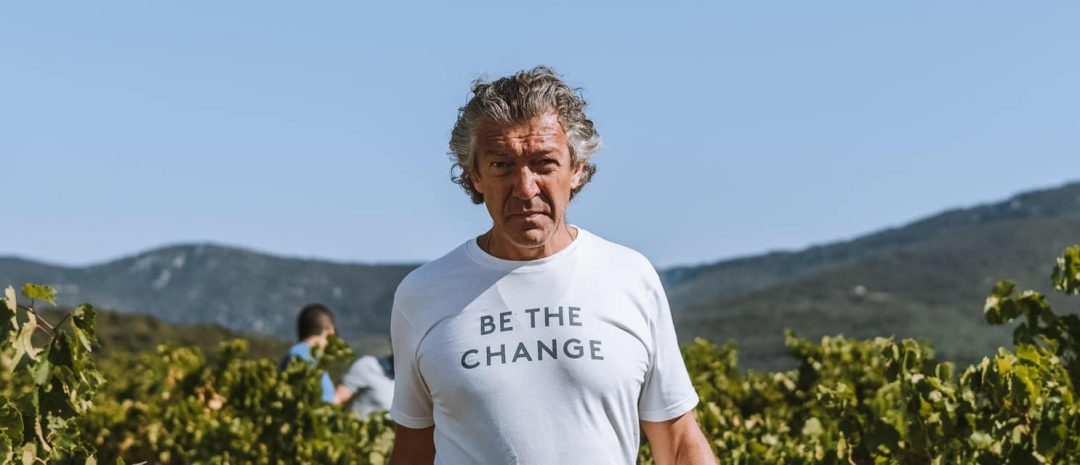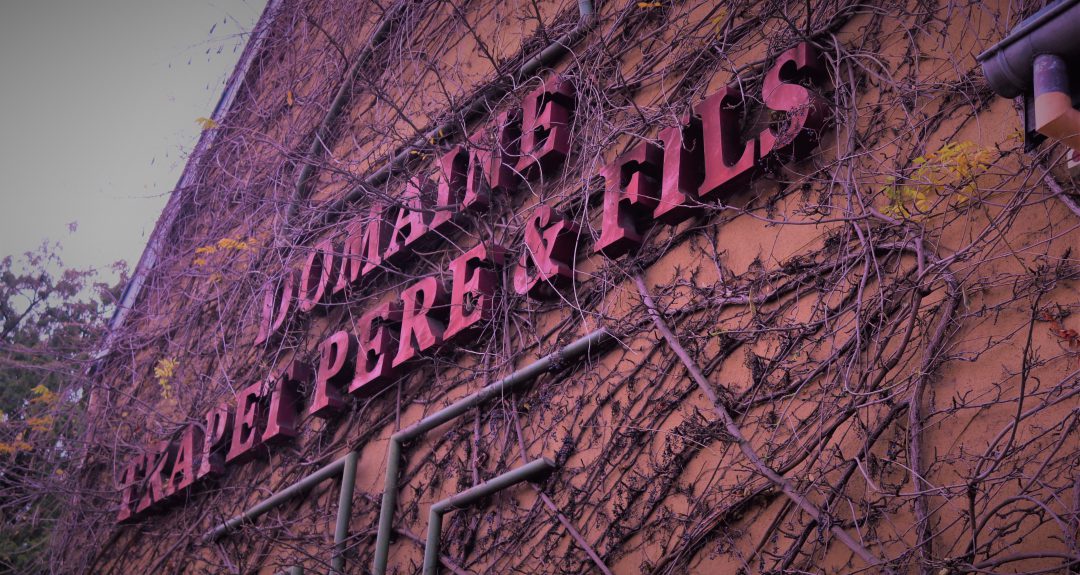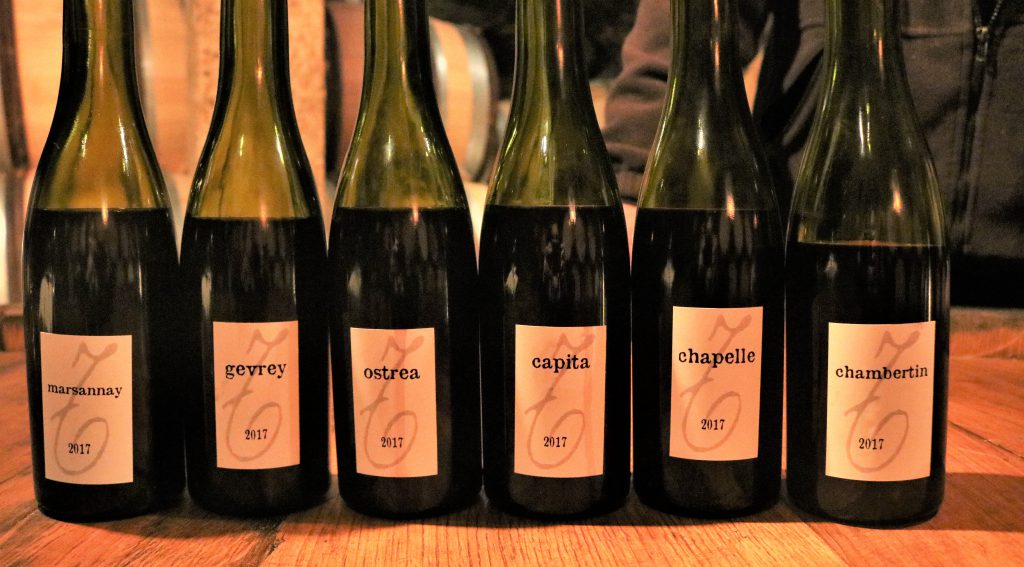Photo credit: Gérard Bertrand Wines
A couple of months back, I had the pleasure of (virtually) attending a tasting of Gérard Bertrand wines. This flourishing southern French winery possesses a multitude of certifications. These cover everything from organic conversion, to organics, biodynamics, suitable for vegans, bee-friendly, and no added sulfites.
Listening to Bertrand and his team detail their organic and biodynamic winemaking commitments, I got to thinking. A wealth of misinformation and misunderstanding exists around the concept of sustainable wine.
The Myths & Misrepresentation around Eco-Conscience Wine
Many wine drinkers simply assume that wine, as an agricultural product, is made in an “earth friendly” manner. The notion of chemical herbicides, pesticides, and fungicides sprayed repeatedly on vines during the growing season just doesn’t register. The carbon footprint of winery processes, bottling, packaging, and shipping isn’t considered.
Still other wine enthusiasts draw a black and white line between what they perceive as “conventional” and “natural” in wine production. For these dogmatists, small is beautiful, big is bad. All medium to large scale wineries producing high volume brands, are lumped into the conventional category. And there is a tacit implication that these mass-producing wineries are all rampant polluters.
Mom & pop wineries, tending their vines by hand, may seem the most worthy model for eco-conscience wine consumers. However, they aren’t always a feasible route to sustainable wine consumption. Firstly, because they don’t produce enough wine for widespread distribution. This means that most wine lovers can’t access them. Secondly, as they lack the economies of scale to produce affordable wines for low to middle income consumers, while themselves remaining profitable.
Big Wineries Making Big Strides for Sustainable Wine
So long as the demand for wine remains high globally, larger wineries are necessary. With that in mind, those making significant efforts to farm in a sustainable manner, and to offset carbon emissions, should be encouraged, not dismissed for their size.
As these larger players embrace change, they force more sluggish competitors to keep up. Just look at the actions of two powerhouse wineries, Familia Torres and Jackson Family Wines. Their efforts to address and redress the impacts of climate change in wine production are laudable. Eco-conscience, high volume companies such as these also do valuable work educating consumers on sustainable wine.
At just over two million bottles produced annually, Gérard Bertrand is hardly a wine-producing giant. And yet, with their numerous branded labels, they would surely be pegged as conventional by many a purist. To me, this is an unfortunate oversimplification.
The Organic Engagement Behind Gérard Bertrand Wines
The engagement shown by Gérard Bertrand wines, in terms of organic, biodynamic, and sustainable practices, can hardly be dismissed as a marketing ploy. The winery has employed organic farming methods for over twenty years. This is well before organic food production captured mainstream attention. What’s more, they have gone the additional step of certifying their practices.
Organic and biodynamic certifications like Agriculture Biologique (AB) and Demeter necessitate a long conversion process, regular audits, and mountains of fastidious paperwork. They oblige adherents to apply their strict rules of adhesion to the letter.
At present, Gérard Bertrand has an impressive 880 hectares of vineyards certified biodynamic or organic, undergoing biodynamic conversion. Bértrand is thus one of the largest organic and biodynamic vineyard owners world-wide. The winery also actively supports their grower partners in the organic transition process.
A Presentation & Tasting of Gérard Bertrand Wines
Over the course of a morning, Bertrand presented no less than eight different ranges of Gérard Bertrand wines. Each brand/estate espouses one or several facets of sustainable wine production.
Change Sauvignon Blanc, IGP Pays d’Oc 2020 – 87pts. VW
Gérard Bertrand’s Change brand is dedicated to supporting its grower partners in the conversion to organic viticulture. The transition period lasts three years, in which producers must adhere to organic viticultural regulations in readiness for certification. The Change wines are certified Conversion Agriculture Biologique (CAB).
The Change Sauvignon Blanc is a pleasant, every day aromatic white wine with notes of white grapefruit, and chamomile on the nose. The palate is crisp and light bodied, with a dry, citrussy finish.
Where to Buy: Inquire with agent (Southern Glazer’s)
Naturae Chardonnay, IGP Pays d’Oc 2020 – 88pts. VW
The Naturae range has no added sulphites. In order to produce clean, consistent quality, the grapes are carefully sorted and winery hygiene protocols are meticulously followed. Naturae wines are certified organic and suitable for vegans.
Intense notes of poached pear and apricot feature on the nose. The palate is fresh, medium bodied, and easy drinking, with its smooth texture and lively yellow fruit flavours. Hints of refreshing bitterness frame the finish.
Where to Buy: SAQ ($18.70)
Cigalus Blanc, IGP Aude Hauterive 2019 – 90pts. PW
The IGP Aude Hauterive is nestled between the southern Massif Central and the Pyrenees. These valley vineyards follow the Aude river and neighbour the Corbières AOC. Gérard Bertrand wines started their ambitious biodynamic vineyard project here, back in 2002.
The Cigalus white is a Demeter-certified biodynamic white wine blend of Chardonnay, Viognier, and Sauvignon Blanc. Fermented and aged mainly in French oak, this is a bold, perfumed white with acacia, honey, yellow peach, and toasty oak nuances on the nose. The palate is creamy and textural, with a concentrated core of yellow fruit and vanilla spice. Needs time for the oak flavours to integrate further.
Where to Buy: Inquire with agent (Southern Glazer’s)
Source of Joy Rosé, Languedoc AOP 2020 – 89pts. PW
Source of Joy is a new entrant in the line up of Gérard Bertrand wines. It is named for a network of natural water sources coursing under the hilly, schist and limestone vineyards that produce this organic Grenache, Syrah, and Cinsault blend. This “gastronomic rosé” is made with the saignée method, with no malolactic fermentation (to retain freshness), and partial oak ageing.
Pretty pale pink in colour with a mix of ripe and candied red berry aromas, underscored by hints of vanilla. The palate has a tangy, red fruit driven appeal and an ample, rounded structure. The finish is dry and moderately persistent, with a touch of refreshing bitterness.
Where to Buy: Inquire with agent (Southern Glazer’s)
Clos du Temple Rosé, Languedoc Cabrières AOP 2019 – 91pts. LW
Clos du Temple is sourced from eight hectares of old vine Grenache, Cinsault, Syrah, Mourvèdre, and Viognier vineyards in the schist-based Languedoc Cabrières terroir. This is Gérard Bertrand wines’ ultra-premium, Demeter-certified biodynamic rosé, retailing for well over $200 (CAD).
Pale cream rose in colour, with delicate aromas of star anise, fresh herbs, red apple, and stone fruits. The palate is full-bodied and voluptuous, with marked toasty oak and exotic spice flavours overlaying hints of peaches and cream. Moderately firm, almost peppery tannins frame the long finish. Highly complex, but overshadowed by the oak at present. Needs 12 – 18 months’ cellaring to harmonize.
Where to Buy: Inquire with agent (Southern Glazer’s)
Orange Gold, Vin de France 2020 – 92pts. VW
This organic, orange wine is another new addition for Gérard Bertrand wines. It is made from whole bunch vinification of Chardonnay, Grenache Blanc, Viognier, Marsanne, Mauzac, and Muscat grapes. According to Bertrand, the goal is to create a “structured, rather than tannic white wine, with balanced bitterness”. For me, this objective was achieved.
Pale amber in colour, with attractive baked apple, clementine peel, and dried floral notes. The palate is fresh, broad, and easy drinking with moderate concentration of earthy, savoury nuances, and an appealing hint of bitter citrus peel on the finish. This is a fantastic introductory wine for orange wine novices.
Where to Buy: Inquire with agent (Southern Glazer’s)
Change Merlot IGP Pays d’Oc, 2019 – 86pts. VW
This red wine offering from the organic conversion range, Change, has marked herbal flavours underscored by hints of red and black fruits. The palate is medium in body, with a firm, somewhat rustic character and peppery finish.
Where to Buy: Inquire with agent (Southern Glazer’s)
Pollinat’ Syrah, IGP Cévennes 2019 – 88pts. VW
The Pollinat’ label reflects Gérard Bertrand wines’ commitment to protect bees and other pollinators in the Cévennes region of Southern France. The wine is certified organic and “Bee Friendly”.
Deep purple in colour, with ripe black berry, violet, and green peppercorn aromas on the nose. The palate is fresh, medium in body, and moderately firm with fairly chewy tannins.
Where to Buy: Inquire with agent (Southern Glazer’s)
Naturae Cabernet Sauvignon, IGP Pays d’Oc 2019 – 87pts. VW
The Naturae Cabernet Sauvignon has no added sulphites, is certified organic, and suitable for vegans. This medium bodied red has smoky, meaty nuances on the nose, mingled with sweet black fruit. The palate is fresh and very firm, with tightly wound tannins. Decant an hour before serving.
Where to Buy: Inquire with agent (Southern Glazer’s)
Cigalus Rouge, IGP Aude Hauterive 2019 – 92pts. PW
The biodynamic Cigalus red wine is a blend of Syrah, Merlot, Caladoc, Cabernet Franc, Grenache, Cabernet Sauvignon, Mourvèdre, and Carignan. Its bold character is an able reflection of the region’s sundrenched Mediterranean climate. The Syrah and Carignan are whole-bunch vinified, while all other varieties are destemmed. Ageing takes place in 100% new French barrels for just over one year.
Dark and brooding, with intense aromas and flavours of sweet blue and black fruit, cigar box, cloves, black pepper, dark chocolate, and violets . The palate is firm and highly concentrated with notable, yet well-integrated, cedar oak nuances. Finishes long and pleasantly warming. Excellent ageing potential; 10 years+.
Clos d’Ora, Minervois la Livinière AOP 2017 – 94pts. LW
Clos d’Ora is perhaps the crowning jewel of Gérard Bertrand wines. This walled, nine hectare biodynamic vineyard sits at an altitude of 220 metres, on a mix of chalk, sandstone, and marl soils. Vineyard work is entirely manual, using horse-drawn ploughs. The vineyards are certified biodynamic.
The Grenache, Carignan, Syrah, and Mourvèdre grapes destined for Clos d’Ora are vinified separately in concrete, and then aged one year in new French barrels and an additional year in bottle.
This is an incredibly dense, powerful red wine with fragrant aromas of cassis, black cherry, and plum, underscored by black olive, dark licorice, and dried provençal herbs. The palate is tightly woven, with spicy oak and ripe dark fruit flavours on the concentrated core. The tannins are bold, yet velvety; lingering on the persistent finish. Decant at least one to two hours before serving, chill slightly, and serve with a great big steak.
(What do VW, PW and LW mean? Click on my wine scoring system to decode the scores for Gérard Bertrand wines).



